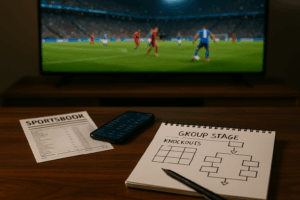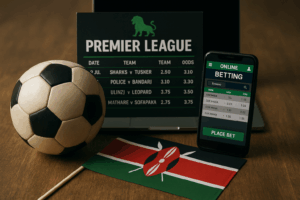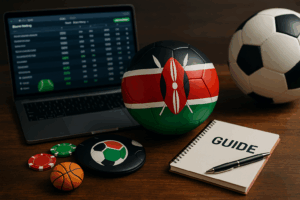
When considering wagers on second half goals in football matches, it’s important to take several key factors into account. First, analyze how the teams performed in the first half, along with the players’ physical condition. Also, keep an eye on team statistics and their tendencies to score after the break. In this analysis, we’ll explore the best strategies and scenarios for betting on second-half goals to increase your chances of success.
Understanding Second Half Goals
When betting on second half goals, it’s crucial to understand how the dynamics of the game change. Players are often more fatigued, and coaches make tactical adjustments depending on the score. This can lead to a surge in goals, especially in tightly contested matches or when teams are pushing to change the result. The key lies in analyzing team performance and how they’ve behaved in past matches.
Goal Trends in Football
In football, certain patterns frequently emerge when it comes to scoring in the second half. Historically, many matches record more goals during this stage. This can be due to fatigue, tactical changes, or increasing pressure as the final whistle approaches. Recognizing these statistical patterns can help you make smarter betting decisions.
Factors That Influence Second Half Goals
Several factors can affect how many goals are scored in the second half of a football match. Consider the following:
- Player fatigue
- Tactical changes by coaches
- Injuries or substitutions
- Weather conditions
- Team morale and motivation
As a bettor, you should carefully evaluate these aspects to make informed decisions. Understanding how each of these elements impacts a game is essential for successful second half goal betting.
Key Performance Metrics
- Recent team form
- Trends in recent matches
- Ball possession share
- Goals scored and conceded
- Psychological aspects of the game
Having this knowledge gives you a better foundation for predicting how a match will develop and when it’s the right time to bet on second half goals.
Team Performance Analysis
When evaluating bets on second half goals, assess team performance throughout the match. Monitor how teams play before and after the break—many show significant shifts in tactics and intensity. Insight into player output and fitness helps you make stronger betting decisions.
Offensive Strategies After Halftime
In many cases, teams adjust their offensive game plans after the break to exploit weaknesses in the opposition. Expect more aggressive attacks, faster transitions, and increased goal-scoring opportunities. Observe team shape and which players assume attacking responsibilities to assess goal potential.
Defensive Adjustments in the Second Half
Teams often make defensive changes to neutralize threats after halftime. This could include formation tweaks, marking key players more closely, or applying higher pressing. Observing these adjustments is critical for understanding goal-scoring potential, as some teams will tighten up and reduce open space.
If you notice a team becoming more conservative or focusing on defending a lead, that often lowers the chances for more goals. Conversely, a team with a fluid playing style and consistent pressure might boost the chance of another goal. Always factor in these reactions before placing your second-half bets.
Statistical Insights
To improve your second-half betting strategy, rely on statistical data that can refine your decisions. Analyze previous matches, paying close attention to team trends and goal distribution in second halves. Understand goal frequency across different time intervals, and assess how substitutions and fatigue contribute.
Historical Data on Second-Half Goals
Historical data shows that many matches produce more goals in the second half. This can be attributed to tactical shifts, increased urgency, or physical exhaustion. Studying how past games have unfolded gives you a better understanding of when betting on second half goals is worthwhile.
Key Metrics to Track
When betting on second half goals, follow essential metrics such as:
- Average goals per match
- Home vs. away goal records
- Individual player performances
Tracking these stats—like second-half success rates or striker conversion trends—helps you better assess risk and potential reward. For instance, teams known for late surges are often great candidates for this market.
Timing Your Bets Effectively
Correct timing is crucial when betting on second-half goals. Observe the game flow, player fatigue, and any injuries. Consider placing your bet during halftime or early in the second half when conditions may be ideal for scoring. Monitoring the match as it develops helps you make the most of available opportunities.
Identifying Value Bets
Spotting value is key to profitable second-half betting. Pay attention to bookmaker odds and compare them to your own statistical assessment. When odds are higher than your estimated probability, that’s an opportunity. Studying team form and playing styles helps you recognize these profitable scenarios.
The Importance of Live Betting
Live betting allows you to take advantage of in-game developments. As the match progresses, you can evaluate team performance and identify scoring chances. Tactical changes, injuries, or cards can all shift the game’s momentum—and your odds of winning.
With live betting, you’re able to respond instantly to shifts on the field. For example, if a team suddenly increases attacking pressure, you can react accordingly. Always remain alert and analytical to get the most out of each live betting opportunity.
Common Mistakes in Second-Half Goal Betting
Many bettors make avoidable mistakes when betting on second half goals. One of the most common is insufficient research. Understanding current form, recent performances, and tactical dynamics is crucial for better decisions. Here are some frequent errors to avoid:
Ignoring Match Context
Match context matters. Bettors often focus only on form and overlook key details like the match’s importance, injuries to key players, or external conditions. These factors can significantly affect the second half, and ignoring them lowers your odds of success.
Misinterpreting Team Form
Another common mistake is misreading form. Just because a team is winning doesn’t always mean they’re the best second-half bet. Form depends on opponents, injuries, and tactical shifts. Review how teams have performed under pressure and evaluate their adaptability. Analyze the last few matches for a clearer picture.
Expert Tips for Betting on Second Half Goals
Here are some professional tips that can help improve your betting results:
- Analyze team form and recent results
- Study previous match statistics
- Pay attention to lineups and injuries
- Observe how teams handle pressure after the break
- Always consider the broader match context
Research and Preparation
Before betting, do thorough research. Study current team form, head-to-head history, injury reports, and coaching tactics. Preparation is key—take notes to help you make better betting choices.
Applying Structured Betting Strategies
To become a successful bettor, you need to apply structured strategies. Set clear criteria, such as betting only when teams show strong second-half trends. Manage risk, monitor odds, and explore various bet types like “Both Teams to Score – 2nd Half” or “Over 1.5 Goals in 2nd Half.” Always rely on fresh, objective data rather than emotions.
When to Bet on Second Half Goals in Football
To decide the right time to bet on second half goals, analyze these factors:
- First-half performance (especially attacking potential and defensive weaknesses)
- Player fatigue and injuries
- Likelihood of tactical changes
- Statistical trends from past matches
When all these elements align, your predictions will be more accurate—and your betting strategy more profitable.






